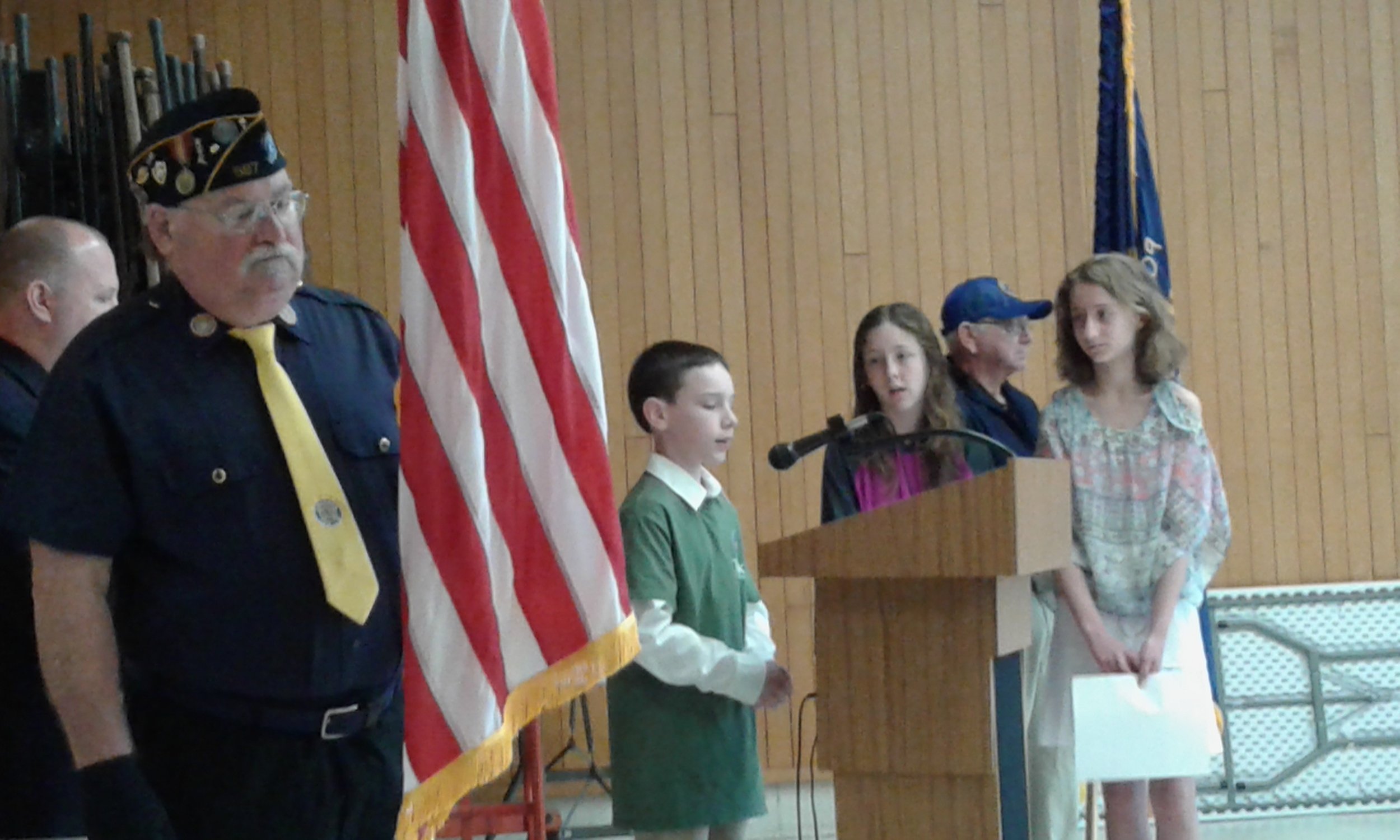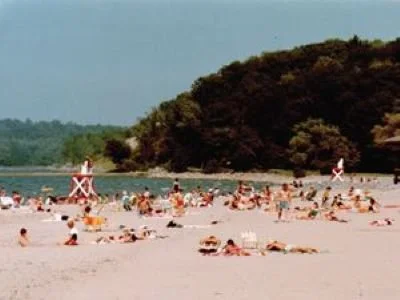Recently, if you’ve driven on one of Fulton’s two main city routes, Broadway and Oneida Street, you may have noticed a series of banners honoring our city’s war veterans. Sometimes, when traffic is moving briskly and it’s hard to focus on each banner, I think about this group of men and women together and honor their service to our country. But when I hit a red light and have more time, I reflect on each individual’s sacrifices for our freedom. That’s what happened for me a few days ago, when I stopped on the corner of Broadway and West First, waiting to cross the bridge. There flies a banner for Fultonian Carlton W. Barrett.
I was already familiar with Barrett’s military career, thanks to a Fulton schoolteacher who’s making valiant efforts to bring some much needed attention to this veteran. The schoolteacher is Bill Cahill, and since 2015, he’s been working to bring Barrett’s story to all Fultonians (as well as anyone who admires the traits of courage and selflessness). What a worthy story it is.
It was June 6, 1944, a date now known as D-Day. US Army Private Carlton Barrett, like thousands of other Americans fighting in World War II, had landed on the beaches of Normandy, France, where one of the fiercest battles for democracy was being fought. Barrett was a field guide with the Army’s 1st Division 18th Infantry Regiment and his assignment that day was to direct troop movements up the beach and coordinate communication between troops and officers. But along with those important jobs, Barrett accomplished much more.
Amid the horror taking place, Barrett saw soldiers fighting for their lives from battle injuries. Without abandoning his duty, Barrett began swimming wounded soldiers out to boats that evacuated them to safety and medical treatment. Indeed, those were heroic acts that 24-year-old Barrett performed, but they become even more so because he accomplished them even after being shot in both hips and his thigh. Only a foot wound finally ended his efforts and he was evacuated to safety. For his actions and choices, Barrett was awarded The Medal of Honor; the highest military decoration in the Armed Forces, presented for gallantry and valor in combat above and beyond the call of duty.
How many Fultonians ever knew of Barrett’s bravery? I doubt I would have if it wasn’t for Bill Cahill, who’s been teaching fifth and sixth grades at Volney School since 2001. While Cahill has always had the best interests of his students and their education in mind, it was a 2012 New York State mandate for schools that prompted him to consider Barrett’s heroics. The mandate focused on character education, so Cahill, who tries to create lessons that his students can relate to, began searching for a local role model who could serve as an example of an admirable character. He found just such a person in Barrett.
“At a teachers meeting to discuss character education, a colleague of mine, Rick Bush, shared that he’d found Barrett’s Medal of Honor citation,” Bill explained. “I asked the room full of mostly Fultonians if they’d heard of this man. Sadly, no one had. After I started researching Barrett, one of my students’ moms, Carolyn Zimmerman, offered her genealogy research skills. That gave me enough material to write my first article for student use.”
One of the ways in which Cahill engages his students in Barrett’s character is to have them imagine how it must have felt to be in that soldier’s army boots. After sharing a summary of Barrett’s D-Day efforts, he asks his class a series of questions, such as, What character trait of Barrett’s is the most impressive to you? What do you think Barrett was thinking when he made the choices that he did that day?
I pondered how I’d answer Cahill’s thoughtful questions, but my responses didn’t compare to his students’ inspiring answers. “The most impressive trait that CWB has,” one student wrote, “is to be risking his life for all of those people that now can go home and have kids and their kids can have kids and if it wasn’t for CWB then those people would not be living.” When it comes to the care Barrett took with fellow soldiers, another student believes that “when people are hurt or upset at any time or any place, you can ask what’s wrong and if there is a solution to that then use it and help people.”
Cahill doesn’t limited character education to the classroom. He’s moved Barrett’s story into our community by having students write essays about him and then read them at our city’s Memorial and Veterans Day events. And he’s got bigger plans. Cahill is currently in discussion with Fulton’s Mayor Michaels, Fulton schools superintendent Brian Pulvino and the board of education and other elected officials, to consider the possibility of naming our Junior High School after Barrett, or at least erecting a permanent display in the main entrance. Other potential projects include erecting a statue at the War Memorial or Veterans Park and proclaiming June 6 Carlton W. Barrett Day. To help achieve these goals, Cahill is researching if the Medal of Honor Society; the US Army, the 1st Division; the New York State Historical Society; and our Assemblyman and Congressional representatives could help with funding or grants.
Cahill is well aware that Barrett is just one of many Fultonians who have served our country and he is in no way implying that others from our city aren’t also heroes. In fact, when explaining his project, Cahill often quotes Barrett, who once said this when people tried to call him a hero: “It was after [D-Day] that I knew what a hero really is. They’re all heroes just for being there, especially those that never came back.”
By sharing one soldier’s heroic acts, Cahill asks our youth to consider their own character traits. But shouldn’t we all be doing that, no matter our age, as we go about our lives in our neighborhoods, our city and our world? Though Cahill said the following about his students, I think it applies to each of us: “The character traits that Barrett was displaying on that day were all qualities we want our kids to have. Kindness, compassion, thinking of others, self-sacrifice and serving something bigger than yourself.”
A few of Volney schoolteacher Bill Cahill’s students reading essays to honor Fultonian U.S. Military Medal of Honor recipient Carlton Barrett.


